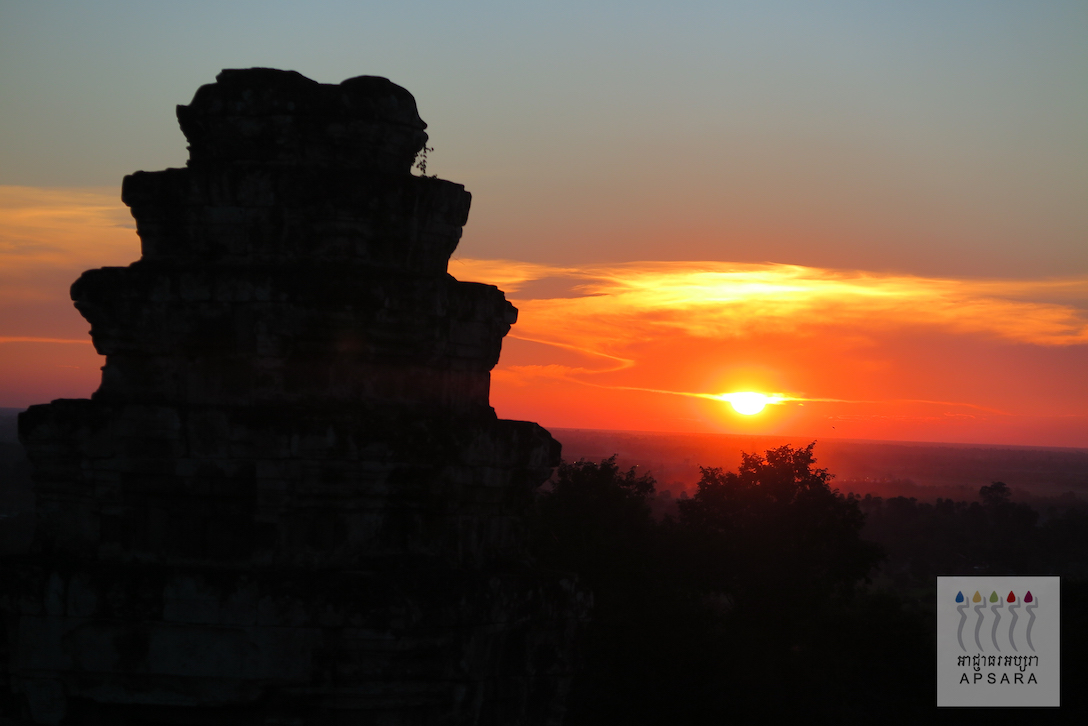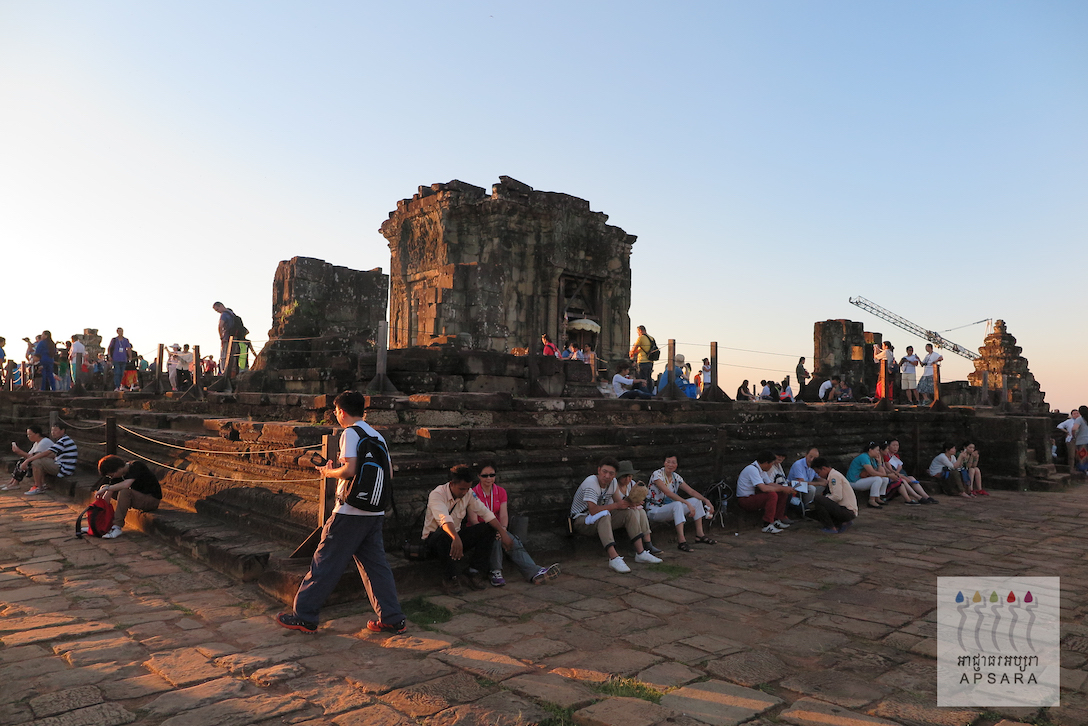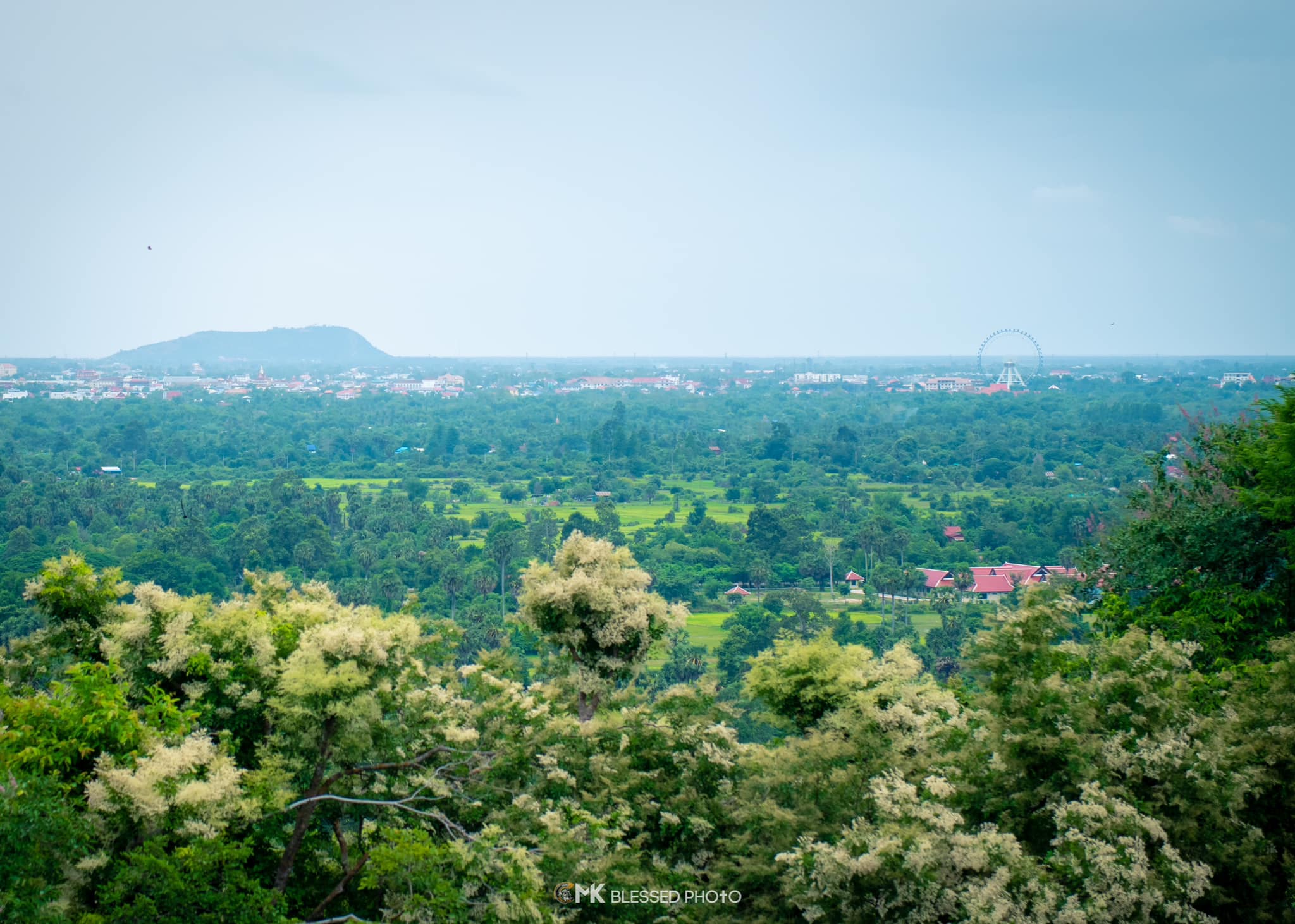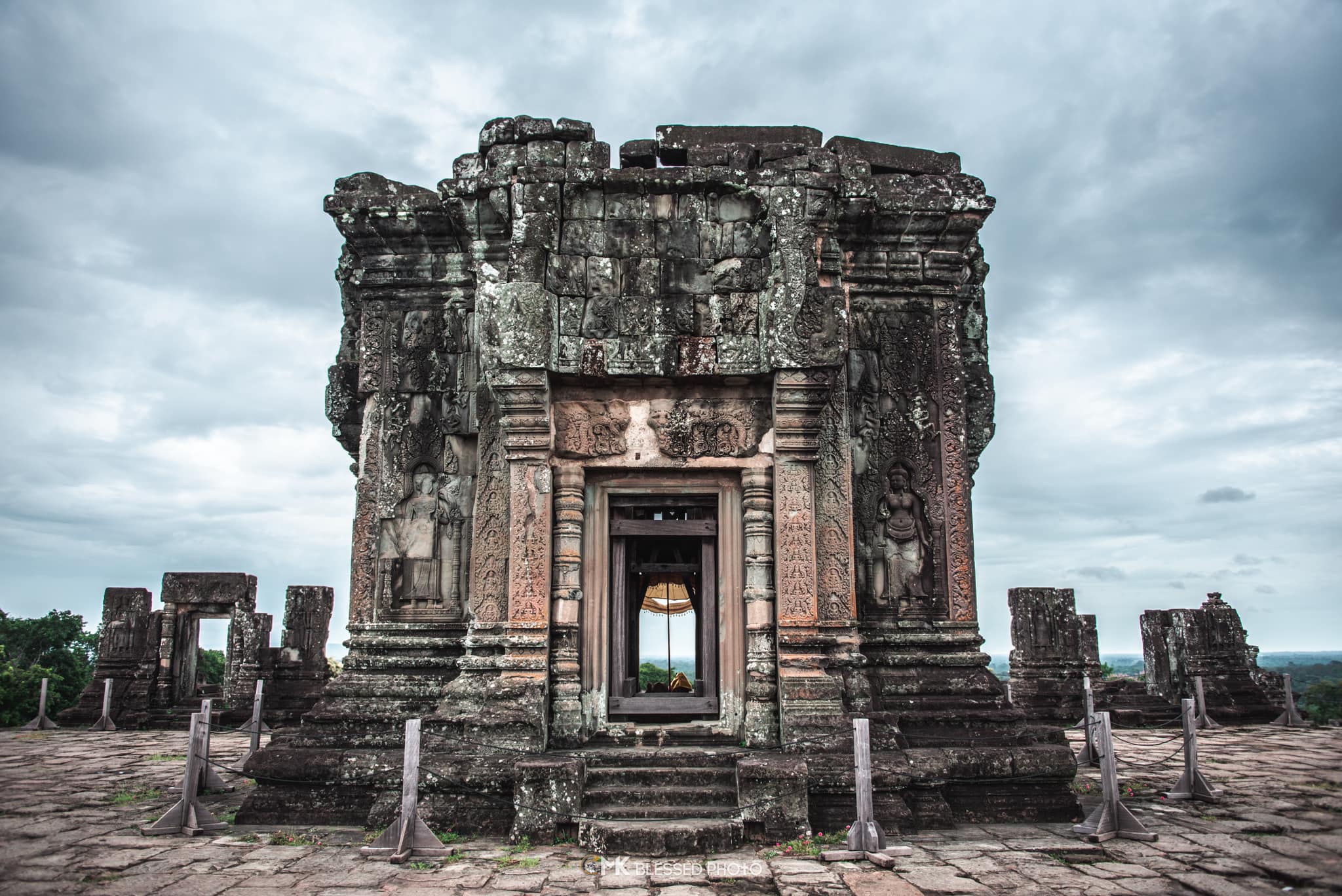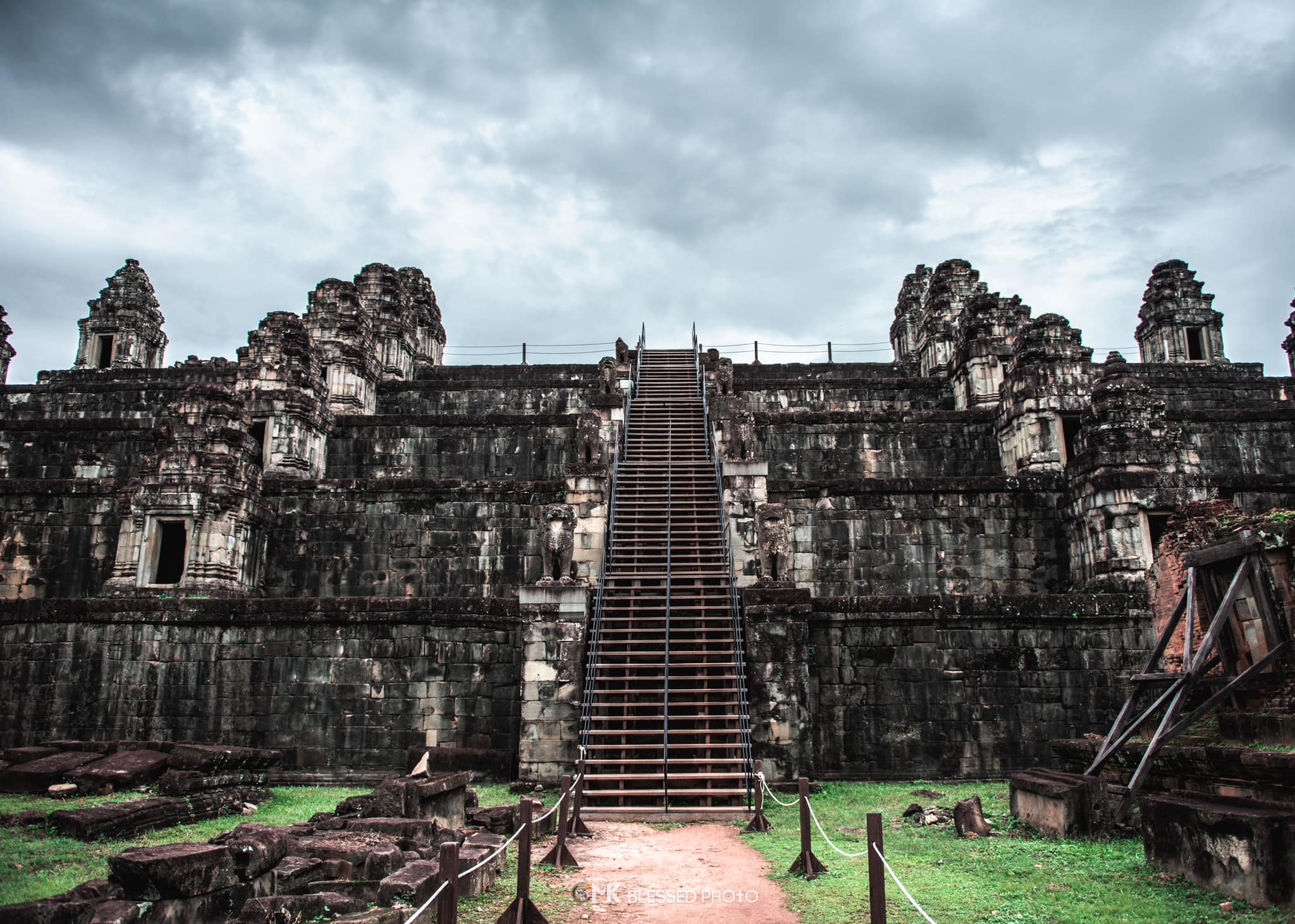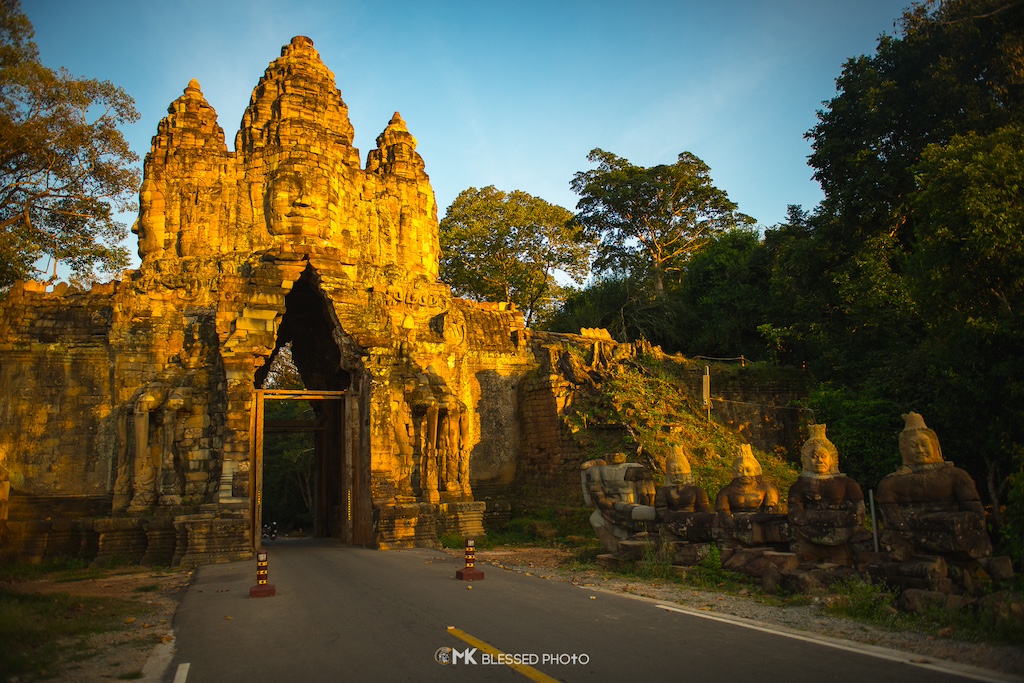(Photos by: MK Blessed Photo & Apsara National Authority)
Phnom Bakheng: Witnessing Sunset from Angkor's Ancient Hilltop Temple
Phnom Bakheng, one of the most treasured sites in the Angkor Archaeological Park, offers a unique blend of historical significance and natural beauty. This temple, built at the end of the 9th century by King Yasovarman I, is strategically situated atop a hill, providing a commanding view of the Angkor region, including Angkor Wat and the surrounding forest.
Phnom Bakheng was the first major temple mountain constructed in the Angkor area, signifying the shift of the Khmer capital from Roluos to Angkor. The temple is dedicated to Shiva and symbolizes Mount Meru, the center of the Hindu and Buddhist universe. Its design includes seven levels, representing the seven heavens of Hindu mythology.
The temple's main attraction is its spectacular sunset views, drawing visitors from around the world. The experience of watching the sun dip below the horizon, casting golden hues over the ancient Angkor landscape, is truly mesmerizing. However, it's advisable to arrive early as the site can get crowded due to its popularity.
Exploring Phnom Bakheng involves a moderate climb, but the journey is part of its charm. The path winds through dense forest, offering a refreshing communion with nature before reaching the temple's summit.
Apart from its stunning sunset views, Phnom Bakheng is also known for its architectural beauty. The temple's central sanctuary, once home to a large lingam, is surrounded by more than 100 smaller towers, which are arranged in a series of concentric circles around the main structure.
Despite the wear of time and the impact of tourism, Phnom Bakheng continues to be a site of spiritual and historical significance. Its blend of architectural innovation, religious importance, and natural beauty makes it a must-visit destination in Siem Reap.
Major Sight Spots in Phnom Bakheng
Sunset Views: Panoramic vistas of the Angkor region.
Central Sanctuary: The main temple structure.
Surrounding Smaller Towers: Over 100 towers arranged in concentric circles.
Hilltop Location: Offering a view of the surrounding landscape.
Forest Path: The nature trail leading to the temple.


